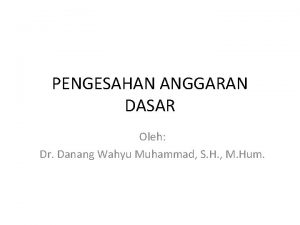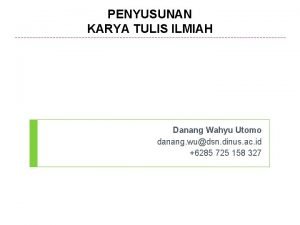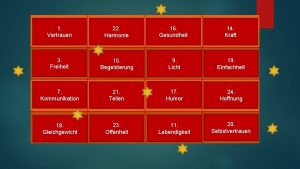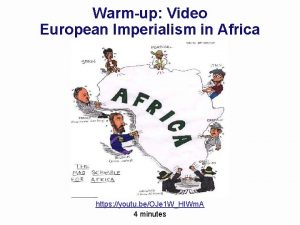Link to the video with commentaries https youtu






















- Slides: 22

Link to the video with commentaries: https: //youtu. be/bti. N 1 -HBJWc Exploring the role of small scale processes in air-sea-ice interactions Pierre-Vincent Huot*, Thierry Fichefet, Christoph Kittel, Nicolas Jourdain, Xavier Fettweis UCLouvain, Louvain-la-Neuve, Belgium

1) Sensitivity of the sea ice and air-sea fluxes to the forcing resolution 2) Imprints of mesoscale activity on the atmosphere and sea ice

1) Sensitivity to the forcing resolution Overview: Representing coastal seas of Antarctica in models is tricky (yet crucial) Partly because of the role of small scale processes: polynyas, eddies, tides / currents interactions with the bathymetry or ice scape. . . High resolution (thinner than 1/12°) models are often used to this end. However, global reanalysis used as forcing have coarser resolution (ERA 5: 0. 25°, JRA 55: 0. 7°, MERRA 2: ≃ 1°) Are there benefits of using higher resolution forcing ?

Models and experimental design Ocean model 1/24° res. regional config. of the Adélie Land sector (East Antarctica) NEMO 3. 6 - LIM 3 with: landfast ice (collab. with J. Sterlin and G. Van Achter), ice shelf cavities, tides. Lateral boundaries: PSY 4 V 3 R 1 1/12° analysis (Mercator Ocean) Run from 2007 to 2015 Atmospheric forcing Dynamical downscaling of ERA 5 performed by the MAR (modèle atmosphérique régional) model at 20, 10 and 5 km resolution (AM 20, AM 10 and AM 5 simulations) The three simulations share identical parameters and boundary conditions (ERA 5). 3 simulations: OM 20, OM 10 and OM 5 Fluxes computed in NEMO via bulk CORE formulae using 3 -hourly outputs from AM 20, AM 10 and AM 5, resp.

Performance of MAR and ERA 5 vs. weather stations MAR produces stronger and more realistic coastal winds than ERA 5 courtesy of C. Kittel AM 5 (MAR 5 km) is slightly better on average Using MAR : allows to only consider the effect of horizontal resolution Surface elevation, bathymetry and locations of the Automatic weather stations Coastal stations Evaluation of near surface wind speed at the weather stations location

Effects of resolution on simulated winter winds ● ● Increasing the resolution of the atmospheric model strengthens the southerly winds (katabatic) and the easterlies Offshore winds extend further over the ocean / sea ice at higher resolution

Effects of forcing resolution: landfast ice and polynyas ← Probability of landfast ice (two weekaveraged velocity < 5 cm/s) and polynya (SIC < 0. 5 or SIT < 0. 2 m) Averaged over 2010 -2015 in OM 5 (top). Difference between OM 5 and OM 10 (middle), OM 5 and OM 20 (bottom) Higher resolution forcing: + polynyas frequency - landfast ice frequency

OM 5 -OM 20 OM 5 -OM 10 OM 5 Effects of forcing resolution: sea ice production ← Sea ice production is concentrated in polynyas ← Production of sea ice is increased under higher resolution forcing, due to the more frequent polynyas ← Winter sea ice growth rates (2010 -2015) in OM 5 and difference with OM 10 and OM 20

OM 5 -OM 20 OM 5 -OM 10 OM 5 Effects of forcing resolution: sea ice production Contribution of individual terms to the sea ice budget for different types of sea ice cover ← Winter sea ice growth rates (2010 -2015) in OM 5 and difference with OM 10 and OM 20

Effects of forcing resolution: polynya activity The sensitivity to forcing resolution varies from a polynya to another Up to 30% increase in sea ice production between OM 20 and OM 5 ← Box plot of the 10 m wind module and sea ice production averaged in each polynya and relative difference with OM 5.

Effects of forcing resolution: causes ? - impact on the atmosphere dynamics (wind intensification) ? increased spatial (and temporal) variability ? role of winds vs. other forcing fields ? 2 additional experiments: - AM 5 forcing coarsened on AM 20 grid (OM 5 x 20) - AM 5 winds and AM 20 for the other fields (OM 20 w 5)

Effects of forcing resolution: causes ? - impact on the atmosphere dynamics (wind intensification) ? increased spatial (and temporal) variability ? role of winds vs. other forcing fields ? 2 additional experiments: - AM 5 forcing coarsened on AM 20 grid (OM 5 x 20) - AM 5 winds and AM 20 for the other fields (OM 20 w 5) ← Box plot of the sea ice production averaged over each polynyas

Effects of forcing resolution: causes ? - impact on the atmosphere dynamics (wind intensification) ? increased spatial (and temporal) variability ? role of winds vs. other forcing fields ? 2 additional experiments: - AM 5 forcing coarsened on AM 20 grid (OM 5 x 20) - AM 5 winds and AM 20 for the other fields (OM 20 w 5) Stronger winds at lower resolution (OM 5 x 20) produce the same effects. No benefits of increasing the resolution of the other forcing fields. ← Box plot of the sea ice production averaged over each polynyas

Summary We tested the sensitivity of the sea ice to the forcing resolution using a set of NEMO-LIM simulations forced by MAR outputs at 20, 10 and 5 km resolutions. High resolution atmospheric simulations produce stronger coastal southerly winds that extend further offshore. Polynyas frequency and sea ice production are significantly increased when using 5 km forcing resolution instead of 20 km. Sensitivity to forcing resolution is lower between 10 km and 5 km. Coarsening the resolution of the 5 km MAR outputs has minor effect on the sea ice Using 5 km winds only is sufficient to obtain the effect of forcing resolution.

Conclusions Simulating sea ice / air-sea fluxes in coastal seas of Antarctica strongly depends on the representation of winds → regional atmospheric model are a useful tool Realistic wind intensity is more important than high resolution → ways of improving / correcting the forcing without increasing its resolution Implications for ice shelf melting, sea ice and Dense Shelf Water production simulated in coarser models / estimated using global reanalysis ? These results have been submitted to Ocean Modelling (Huot et al. 2021 ? )

2) Imprints of mesoscale activity on the atmosphere and sea ice Ongoing work Eddies modulate air-sea interactions: eddy killing effect, imprint on wind speed, clouds, tropical cyclones … → And in polar regions ? Interactions with sea ice ? NEMO-LIM + MAR (10 km) coupled model Fluxes computed in the atmospheric model 1 year simulation (for now) Sea ice fraction (-) 1 0 High-pass filtered wind above swirls of sea ice

Eddy tracking Detection area We track the eddies on daily SSH model outputs using the Fraghmout and Frenger algorithm (detection of local SSH extrema) Radius (km) In 1 year: ≃ 10000 (not unique) “eddies” detected 57% cyclones ≃ 30 per day Anti-cyclonic Cyclonic Anti Cyc Amplitude (cm) SSH field simulated on the 10 th Nov. 2011, and center of detected “eddies”

Cyclonic eddies: sea surface signature Select only the eddies with an ‘amplitude’ > 4 cm All cyclonic eddies (1378) → Only sea ice covered (SIC>0. 5) cyclonic eddies (170) →

Cyclonic eddies: imprint on the atmosphere Select only the eddies with an ‘amplitude’ > 4 cm All cyclonic eddies (1378) → Only sea ice covered (SIC>0. 5) cyclonic eddies (170) → Stronger imprint ? To be continued !

References Huot et al. , Effect of atmospheric forcing resolution on sea ice and polynyas off Adélie Land (this study, submitted to Ocean Modelling) Jeong et al. , Impacts of Ice-Shelf Melting on Water-Mass Transformation in the Southern Ocean from E 3 SM Simulations, Journal of Climate, 2020 Abernathey et al. , Water-mass transformation by sea ice in the upper Branch of the Southern Ocean upper branch of the Overturning Southern Ocean overturning, Nature geoscience, 2016 Frenger et al. Imprint of Southern Ocean eddies on winds, clouds and rainfall, Nature geoscience, 2013 Faghmous et al. A daily global mesoscale ocean eddy dataset from satellite altimetry, Nature, 2015

Supplementary material: sensitivity to forcing res. ← Water mass transformation (following Abernathey et al. 2016 and Jeong et al. 2020) in the coastal sea off Adélie Land in OM 5, OM 10 and OM 20

Supplementary material: sensitivity to forcing res. ← Sea ice production in OM 5 and wind vectors (AM 5) for each wind regime, defined as the four quartiles of the area averaged, winter wind direction distribution
 Present simple sports commentaries
Present simple sports commentaries 9z8jqutrwrs -site:youtube.com
9z8jqutrwrs -site:youtube.com Httpv://www.youtube.com/watch?v=embed/cdee6wwqlio
Httpv://www.youtube.com/watch?v=embed/cdee6wwqlio /watch?v=cpvmcrqmmgk
/watch?v=cpvmcrqmmgk Https youtu be n rzjuaqy4
Https youtu be n rzjuaqy4 Pemaragrafan
Pemaragrafan @kmvsp:https://youtu.be/o8cepznvrfw
@kmvsp:https://youtu.be/o8cepznvrfw Shapes that have smooth even edges are measurable
Shapes that have smooth even edges are measurable Https://youtu.be/evt68u65ftw description
Https://youtu.be/evt68u65ftw description @ggggg77767:https://youtu.be/hpftumnsree
@ggggg77767:https://youtu.be/hpftumnsree Youtube'
Youtube' Https //www youtube com/watch?v=ikujtmetruk
Https //www youtube com/watch?v=ikujtmetruk Big bang theory homeostasis
Big bang theory homeostasis @palele fog:https://youtu.be/d7wpinlbph4 nihlink
@palele fog:https://youtu.be/d7wpinlbph4 nihlink @eieieieieieieieieieieieo:https://youtu.be/cnw85yrxzow
@eieieieieieieieieieieieo:https://youtu.be/cnw85yrxzow @d.a.n.a.n.g w.a.h.y.u:https://youtu.be/p7gxik8pssu
@d.a.n.a.n.g w.a.h.y.u:https://youtu.be/p7gxik8pssu Bilateria triploblastic
Bilateria triploblastic @klaudiamolenda6:https://youtu.be/b3mspoqqcno
@klaudiamolenda6:https://youtu.be/b3mspoqqcno Wudsn
Wudsn Https://youtu.be/5xgwyrx19vu
Https://youtu.be/5xgwyrx19vu![[[link:https://www.youtube.com/watch?v=x8tsa8xvcou]] [[link:https://www.youtube.com/watch?v=x8tsa8xvcou]]](data:image/svg+xml,%3Csvg%20xmlns=%22http://www.w3.org/2000/svg%22%20viewBox=%220%200%20200%20200%22%3E%3C/svg%3E) [[link:https://www.youtube.com/watch?v=x8tsa8xvcou]]
[[link:https://www.youtube.com/watch?v=x8tsa8xvcou]] @d.a.n.a.n.g w.a.h.y.u:https://youtu.be/xjmxdckno80
@d.a.n.a.n.g w.a.h.y.u:https://youtu.be/xjmxdckno80 @d.a.n.a.n.g w.a.h.y.u:lhttps://youtu.be/hkzaqqvyxm8
@d.a.n.a.n.g w.a.h.y.u:lhttps://youtu.be/hkzaqqvyxm8











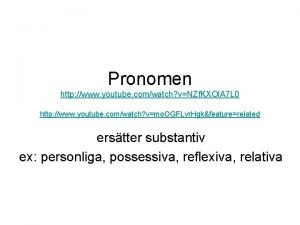



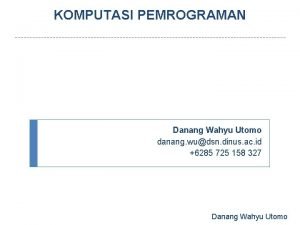

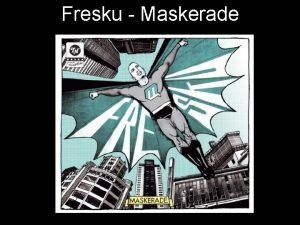
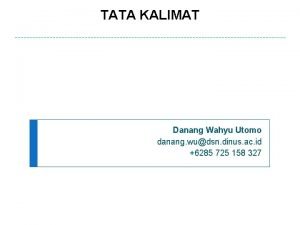

![[[link:https://www.youtube.com/watch?v=x8tsa8xvcou]] [[link:https://www.youtube.com/watch?v=x8tsa8xvcou]]](https://slidetodoc.com/wp-content/uploads/2020/12/3594690_f92e1a0af0625271968dd4c0c2c161fa-300x225.jpg)
